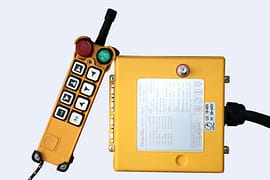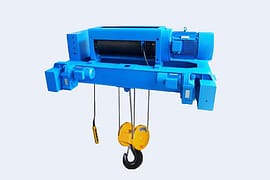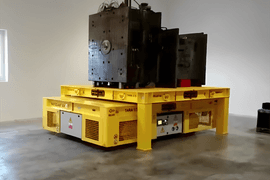- INDUSTRIES
-
EQUIPMENT
-
Overhead Cranes
-

Single Girder Overhead Crane
-

Double Girder Overhead Crane
-

Underslung Cranes
-

Workstation Overhead Cranes
-

Low Headroom Overhead Cranes
-

Grab Bucket Overhead Crane
-

Electromagnetic Overhead Cranes with Lifting Magnet
-

Electromagnetic Overhead Cranes with Magnet Beam
-

Manual Overhead Cranes
-

Double Trolley Overhead Cranes
-

LDP Single Girder Overhead Cranes
-
- Eot Cranes
- Gantry Cranes
- Jib Cranes
- FEM Standard Crane & Hoist
- Hoist & Winch Trolley
- Light Cranes
- Explosion Proof Cranes and Hoists
-
Special Cranes
-

35-65t Clamp Overhead Crane
-

Boat Hoists
-

Boat Jib Crane
-

Yacht Davit Crane
-

Rail Mounted Container Gantry Crane
-

Cleanroom Overhead Cranes
-

YZ Ladle Handling Cranes
-

LDY Metallurgical Single Girder Crane
-

Charging Cranes for Steel Production
-

Insulated Overhead Cranes
-

Gantry Crane for Subway and Metro Construction
-

Forging Crane
-

Quenching Overhead Crane
-

Baking Multifunctional Crane
-
- Port Cranes
- Electric Transfer Carts
-
Overhead Cranes
-
CRANE PARTS
- Crane Wheel Range
- Crane Spreader
- Crane Drives
-
Crane Electrical Equipment
-

Overload Limiter
-

Crane Cabin
-

Crane Power Supply System
-

Explosion Proof Crane Radio Remote Controls
-

Joystick Type Crane Radio Remote Controls
-

Pushbutton Type Crane Wireless Remote Controls
-

Single-pole Insulated Conductor Rails
-

Enclosed Conductor Rails
-

Seamless Conductor Rails
-

Copperhead Conductor Rails
-

Overhead Crane Cables
-
- Other Cranes Parts
\
- ABOUT US
- CONTACT US
Crane hoists are machines that are able to lift and carry heavy objects and move them to another location. They typically achieve this by using a drum or lift wheel that has either a rope or chain wrapped around it. There are many different types available that may be operated either manually, electronically, or pneumatically. There are basically two unique things that distinguish a hoisting crane from the many other types of lifting machines out there: the lifting medium and the type of power used. They use either wire, rope, or chains to lift and their power source is either an electric engine or an air motor.

Different types of crane hoists
There are many different types of crane hoists, one of which is used for construction of large buildings. It goes by several names, such as man-lift and buckhoist, but they are all the same machine. They usually consist of either one or two cages which travel up and down along a tower of stacked sections. Each section of mast is roughly 25 feet high, and it is important that they be added at these intervals in order to provide stability. Using a system of rack and pinion motorization, the cages are able to travel along the mast sections at various speeds.
Crane hoists are also used in underground mines. They can be operated by using either man, water, or animal power and are used to raise and lower conveyances into the shaft. Of course, in modern day they are most often powered by electricity. Three different types of crane may be used for this type of operation: drum hoists, friction hoists, and multi-rope cranes.
Most crane hoists that are in use today use either chain or rope in their design. Those that use chains typically have a lever that actuates the hoist. There is a commonly used handheld model known as the ratchet lever hoist that is operated manually. One of the advantages of using this type is that they can be used in any orientation, whether pulling, lifting, or binding. When choosing between either rope and chain, remember that rope is more light weight but is limited by the drum diameter. Chains on the other hand are much larger and heavier.
There are many other different types of crane hoists out there that may be discussed. For example, overhead models use rails that are located high above the ground. They are usually supported by a building or some other type of structure. The main advantage that they provide is that they are safely out of the way and do not cause an obstruction in the workplace. When speed and portability is an important issue, the truck mounted crane is the perfect choice. It can travel along the public roads so it can quickly move from one location to the next.

Zora Zhao
Expert in Overhead Crane/Gantry Crane/Jib Crane/Crane Parts Solutions
With 10+ years of experience in the Crane Overseas Export Industry, helped 10,000+ customers with their pre-sales questions and concerns, if you have any related needs, please feel free to contact me!
WhatsApp: +86 158 3611 5029
Email: zorazhao@dgcrane.com
Related Blogs
Subscribe to our newsletter
The latest DGCRANE price list, news, articles, and resources.
- Overhead Cranes
- Low Headroom Overhead Cranes
- Double Girder Overhead Crane
- Grab Bucket Overhead Crane
- Top Running Overhead Crane: Wide Application and Easy Maintenance
- Coker Cranes for Harsh Environments: High Temperature and Corrosion Resistant Design
- Single Girder Overhead Cranes
- Eot Cranes
- Eot Crane
- Single Girder Eot Cranes
- Double Girder Eot Cranes
- Underslung Cranes
- Gantry Cranes
- Shipyard Gantry Cranes: Specialized Lifting Solutions for Shipyard Operations
- Truss Gantry Cranes: Cost-Effective, Wind-Resistant, and Perfect for Large Spans
- Gantry Crane
- Different Types of Small Portable Aluminium Gantry Cranes: Cost Effective
- Single Girder Gantry Cranes
- Double Girder Gantry Cranes
- Semi Gantry Cranes
- Casting Yard Gantry Cranes
- Container Gantry Cranes (RMG)
- Portable Gantry Cranes
- FEM Standard Crane & Hoist
- FEM Standard Overhead Cranes
- FEM Standard Gantry Cranes
- FEM Standard Jib Cranes
- FEM Standard Wire Rope Electric Hoists
- FEM Standard Electric Chain Hoists
- Hoist & Winch Trolley
- Low Headroom Wire Rope Electric Hoist: Compact Design for Efficient Lifting in Tight Spaces
- Electric Hoist for Molten Metal: High-Temperature, Safe Lifting for Metallurgical Environments
- Pneumatic (Air) Chain Hoists: Ideal for Explosion-Proof Environments
- 6 Double Girder Trolley Electric Hoists for Overhead Cranes: Custom Solutions for Every Lifting Need
- Manual Chain Hoists: Alloy Steel Construction for Smooth and Safe Lifting
- Electric Wire Rope Hoists
- Chain Hoists
- Crane Trolley
- Electric Winch
- Port Cranes
- Rubber Tyred Container Gantry Crane
- Ship To Shore Crane
- Container Straddle Carrier
- Harbour Portal Crane
- Shipyard Portal Cranes
- Reliable Versatile Electric Transfer Carts
- Powerful Heavy Duty Coil Transfer Carts
- Powerful Pallet Transfer Carts
- Rail Transfer Carts
- Reliable Heavy Duty Ladle Transfer Cars
- RGV Transfer Carts
- Superior Die Transfer Carts
- Trackless Transfer Carts
CRANE PARTS
- Special Cranes
- Rail Mounted Container Gantry Crane
- Cleanroom Overhead Cranes: Reliable Solutions for Healthcare, Electronics, and GMP Workshops
- Charging Cranes for Steel Production: Safe and Reliable Solutions for Efficient Material Handling
- Insulated Overhead Cranes for Safe Non-Ferrous Metal Smelting
- Gantry Crane for Subway and Metro Construction: Efficient Tunnel Debris Removal Solutions
- Quenching Overhead Crane for Heat Treatment Plant: High-Temperature Insulated and Efficient Lifting Solution
- Heavy Duty Forging Cranes: Durable, High-Capacity Solutions for Forging
- Baking Multifunctional Crane: Furnace Tending Assembly for Efficient Carbon Roasting
- 35-65t Clamp Overhead Crane
- Boat Hoists
- Yacht Davit Crane
- Boat Jib Crane
INDUSTRIES
COMPANY
- sales@dgcrane.com
- +86-373-3876188
- +86 158 3611 5029
- Floor 30,Gongyuan INT'I Building, Jinsui Road, Xinxiang City, Henan Province, China



















































































